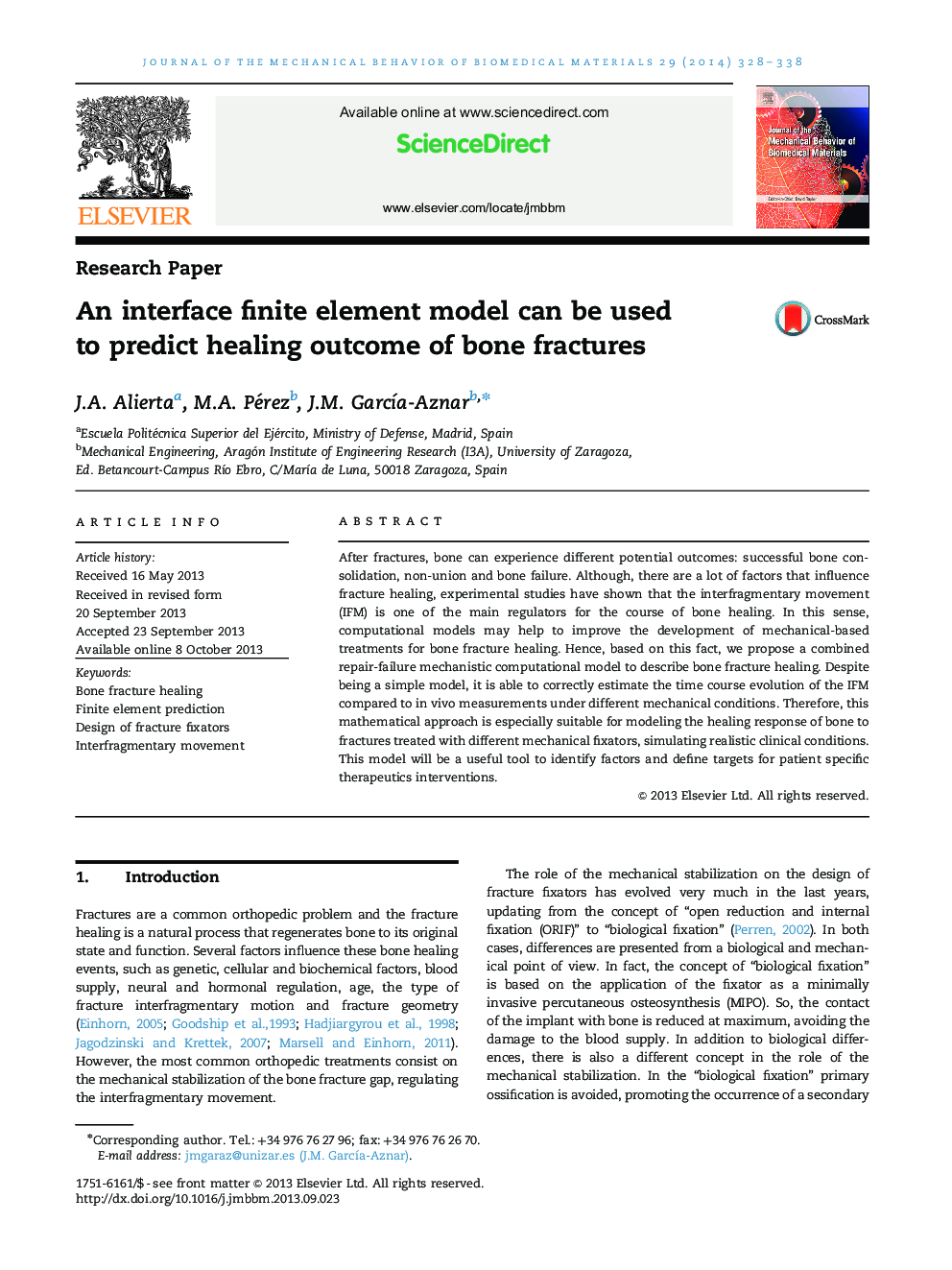| Article ID | Journal | Published Year | Pages | File Type |
|---|---|---|---|---|
| 7209117 | Journal of the Mechanical Behavior of Biomedical Materials | 2014 | 11 Pages |
Abstract
After fractures, bone can experience different potential outcomes: successful bone consolidation, non-union and bone failure. Although, there are a lot of factors that influence fracture healing, experimental studies have shown that the interfragmentary movement (IFM) is one of the main regulators for the course of bone healing. In this sense, computational models may help to improve the development of mechanical-based treatments for bone fracture healing. Hence, based on this fact, we propose a combined repair-failure mechanistic computational model to describe bone fracture healing. Despite being a simple model, it is able to correctly estimate the time course evolution of the IFM compared to in vivo measurements under different mechanical conditions. Therefore, this mathematical approach is especially suitable for modeling the healing response of bone to fractures treated with different mechanical fixators, simulating realistic clinical conditions. This model will be a useful tool to identify factors and define targets for patient specific therapeutics interventions.
Related Topics
Physical Sciences and Engineering
Engineering
Biomedical Engineering
Authors
J.A. Alierta, M.A. Pérez, J.M. GarcÃa-Aznar,
